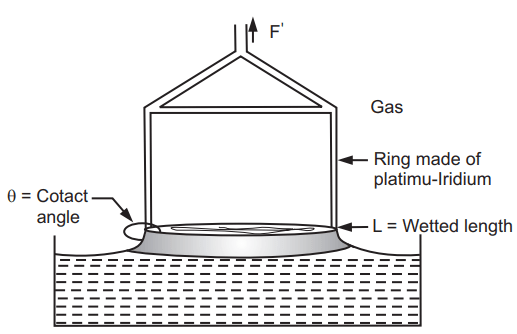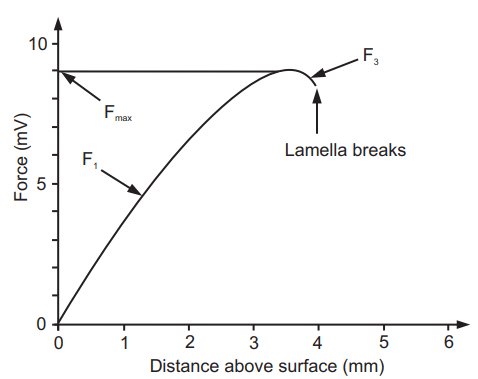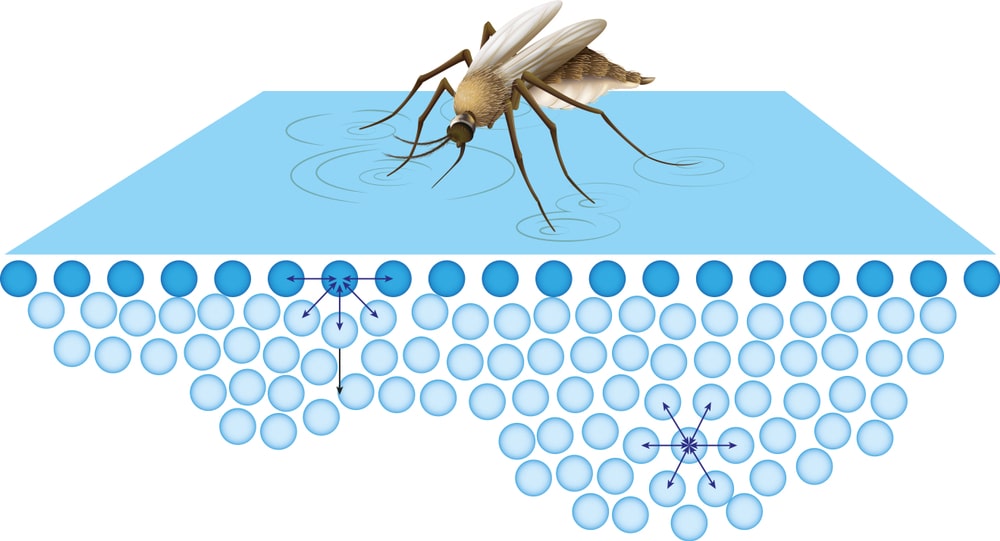Historically the ring method was the first to be developed; hence many of the values for interfacial and surface tension given in the literature are the results of the Ring method. In the ring detachment method, the liquid is raised until contact with the surface is observed. The sample is then lowered again so that the liquid film produced beneath the ring is stretched as shown in Fig. 1.1.


As the film is stretched, a maximum force is experienced; this is recorded in the measurement. At the maximum, the force vector is exactly parallel to the direction of motion; at this moment, the contact angle θ is zero. The illustration in Fig. 1.2 shows the force change as the function of the distance of the ring from the surface of the liquid. In practice, the distance is first increased until the area of maximum force has been passed through. The sample trough containing the liquid is then moved back so that the maximum point is passed through a second time. The maximum force is only determined exactly on this return movement and used to calculate the surface tension. The following equation is used for the calculation of the ring detachment method;

where γ is surface or interfacial tension, Fmax is maximum force, Fv is the weight of the volume of liquid lifted, L is the wetted length and θ is contact angle. The contact angle decreases as the extension increases and has the value of zero degrees at the point of maximum force, this means that the term cos θ has a value equal to 1.
Make sure you also check our other amazing Article on : Detergency
